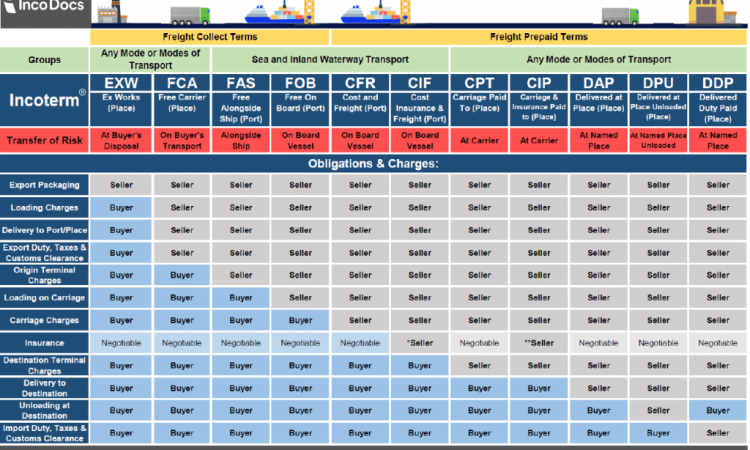Freight shipping can seem complicated, especially for those new to the industry. With a variety of terms, rules, and processes, it’s important to understand the language of shipping to ensure your goods are transported smoothly and efficiently. Whether you’re a small business owner, a logistics manager, or someone looking to ship personal goods, knowing the essential freight shipping terms will help you communicate better with carriers and avoid costly mistakes.
In this blog, we will break down some of the most common freight shipping terms, making the process easier to understand and navigate.
1. Bill of Lading (BOL)
A Bill of Lading is one of the most crucial documents in freight shipping. It serves as a contract between the shipper and carrier, outlining the specifics of the shipment, including the types of goods, quantity, and destination. It also acts as a receipt when the goods are delivered.
2. Freight Class
In Less than Truckload (LTL) shipping, freight is classified based on factors like density, stowability, handling, and liability. These factors determine the freight class, which influences the shipping rate. Understanding your freight class can help you estimate shipping costs accurately.
3. Dimensional Weight
When calculating shipping costs, carriers may use dimensional weight to account for large, lightweight items that take up significant space. This method combines the volume of a shipment with its actual weight to determine the cost.
4. Less than Truckload (LTL)
LTL shipping is used when your shipment doesn’t require a full truckload. With LTL, multiple shipments from different customers share space in one truck. This option is cost-effective for smaller shipments, as you only pay for the space your freight occupies.
5. Full Truckload (FTL)
In contrast to LTL, Full Truckload (FTL) shipping involves renting the entire truck for one shipment. This is ideal for large shipments that take up most or all of the truck’s capacity, offering faster transit times and less handling.
6. Freight Forwarder
A freight forwarder acts as a middleman between shippers and carriers. They handle logistics and coordinate shipments, often overseeing international freight transportation and ensuring compliance with customs regulations.
7. Accessorial Charges
These are additional fees for services not included in the standard shipping rate. Accessorial charges may cover things like inside delivery, liftgate service, residential delivery, or handling oversized items.
8. Customs Broker
If you’re shipping goods internationally, a customs broker is a valuable partner. They manage the paperwork, duties, and legal requirements needed to clear your goods through customs, ensuring a smooth international shipment.
9. Freight Rate
The freight rate is the cost charged by the carrier for transporting goods from one location to another. It is influenced by several factors, including weight, distance, freight class, and mode of transport.
10. Pallet
A pallet is a flat wooden or plastic platform used to stack goods for easier transportation. Palletizing your shipment makes loading, unloading, and securing the goods simpler and more efficient.
11. Pro Number
A Pro Number is a tracking number assigned to each LTL shipment. It allows both the shipper and carrier to track the shipment throughout the transportation process.
12. Incoterms
Short for International Commercial Terms, Incoterms define the responsibilities of buyers and sellers for shipping, insurance, duties, and other costs in international trade. Understanding Incoterms is essential for global shipping.
13. Freight Consolidation
With freight consolidation, multiple small shipments are combined into one larger shipment. This reduces costs and improves efficiency, especially for LTL shipping.
14. Deadhead
Deadhead refers to a trip where a truck returns empty after making a delivery. This is inefficient for the carrier, as no freight is being transported.
15. Flatbed Truck
A flatbed truck has an open platform, making it ideal for shipping oversized goods, construction materials, or heavy equipment that doesn’t fit into standard trucks.
16. Freight Claim
If your goods are damaged, lost, or stolen during transit, you can file a freight claim to seek compensation from the carrier. It’s important to document the damage and file the claim promptly.
17. Hazmat
Hazmat (short for hazardous materials) refers to dangerous goods like chemicals, explosives, or radioactive materials that require special handling and documentation during shipping.
18. Dock
The dock is the loading and unloading area at a warehouse, distribution center, or shipping facility. This is where goods are transferred between trucks and storage.
19. Drop Shipment
In drop shipping, goods are shipped directly from the manufacturer or supplier to the customer, bypassing the seller. This model eliminates the need for the seller to handle inventory.
20. Intermodal Shipping
Intermodal shipping uses more than one mode of transportation—such as trucks, trains, and ships—to move freight. This method is efficient for long-distance or international shipping.
21. Lead Time
The lead time is the total time between placing an order and receiving the shipment. This includes the time for production, processing, and transportation.
22. Reefer
A reefer is a refrigerated truck or container used to transport perishable goods like food or pharmaceuticals. Temperature control is critical in reefer shipping.
23. Tariff
A tariff is a tax or duty applied to goods being imported or exported. It’s important to understand tariffs when shipping internationally to avoid unexpected costs.
24. Volumetric Weight
Also known as dimensional weight, this is used by carriers to charge for large but lightweight shipments based on the amount of space they take up rather than their actual weight.
25. Load Board
A load board is an online marketplace where shippers post available freight, and carriers can bid on the jobs. It connects shippers with carriers looking for loads to transport.
Conclusion
Shipping freight, whether domestically or internationally, becomes much easier when you understand the key terms and concepts used in the industry. From managing freight rates to knowing the difference between LTL and FTL shipping, being informed will help you make smarter shipping decisions, save costs, and avoid unnecessary delays.
